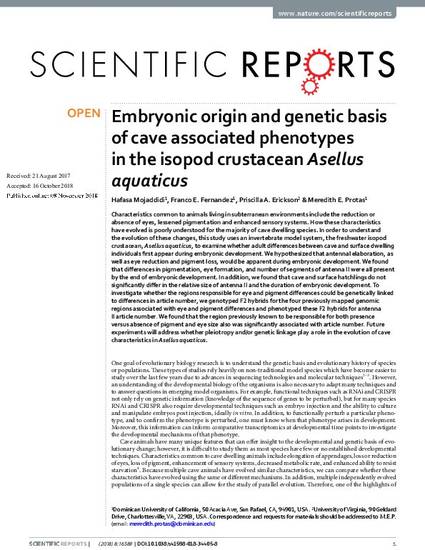
Characteristics common to animals living in subterranean environments include the reduction or absence of eyes, lessened pigmentation and enhanced sensory systems. How these characteristics have evolved is poorly understood for the majority of cave dwelling species. In order to understand the evolution of these changes, this study uses an invertebrate model system, the freshwater isopod crustacean, Asellus aquaticus, to examine whether adult differences between cave and surface dwelling individuals first appear during embryonic development. We hypothesized that antennal elaboration, as well as eye reduction and pigment loss, would be apparent during embryonic development. We found that differences in pigmentation, eye formation, and number of segments of antenna II were all present by the end of embryonic development. In addition, we found that cave and surface hatchlings do not significantly differ in the relative size of antenna II and the duration of embryonic development. To investigate whether the regions responsible for eye and pigment differences could be genetically linked to differences in article number, we genotyped F2 hybrids for the four previously mapped genomic regions associated with eye and pigment differences and phenotyped these F2 hybrids for antenna II article number. We found that the region previously known to be responsible for both presence versus absence of pigment and eye size also was significantly associated with article number. Future experiments will address whether pleiotropy and/or genetic linkage play a role in the evolution of cave characteristics in Asellus aquaticus.
Available at: http://works.bepress.com/meredith-protas/17/
